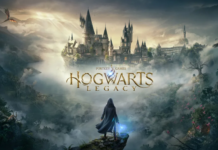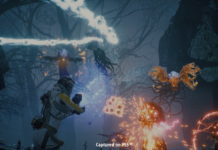Epic music,
a talking sword, colorful worlds, attractive characters – this is the stuff
RPGs are made of. Or at least it’s what RPGs should be made of, and
it’s what you’ll find in Atelier Iris 2: The Azoth of Destiny. Following the
story of Felt (our hero) and Viese (our heroine), two friends and potential
lovers, Atelier Iris 2 is a moderately long adventure with a good story,
decent voice acting, and a few annoyances that might be too much for some to
shake.
Given the
peaceful atmosphere and the friendliness of the world, you could almost be
surprised when things go awry. But this is a video game and that is what’s
supposed to happen. Taking place in the world of Eden, Atelier Iris 2 begins
with a massive, unexplained earthquake. Though everyone survives the quake
(apparently), not everyone is safe. The quake caused half the world to
disappear. What does this mean? Where did the world go? No one knows.

Only after
hearing a sword speak its first words does Felt begin to pick up the trail.
That trail leads him to another world – a strange world that is not familiar
with Eden’s existence. As far as they’re concerned Eden is make-believe. That
doesn’t stop Felt, a young, vivacious fighter who is determined to find the
cause of the disappearance.
Atelier Iris
2’s gameplay consists of two parts: (1) fast battles that are fun and easy to
get into, and (2) repetitious world navigation. The former is the highlight of
the gameplay experience. To me, the story is the first thing a developer
should focus on when creating an RPG. However, that does not mean they should
overlook the turn-based battles. Atelier Iris 2’s combat is simplified with
familiar on-screen commands. It’s quick because the game doesn’t waste time
building up big and beautiful attacks. It’s a straight-and-to-the-point
experience.
At first it
seemed that one of the more interesting gameplay features was the ability to
synthesize items. I still like the idea, but now it’s clear that the final
execution doesn’t quite live up to the concept. Item synthesizing can affect
your progress – if you don’t have the right pieces, a potentially long
scavenger hunt will begin. I’m normally up for a good scavenger hunt,
especially in adventure games. But this can get tedious. Sometimes I would’ve
rather skipped this part and advanced to the next story sequence. Or the next
battle that would get me closer to the next story sequence.
Old-school
backgrounds are hard to praise when faced with modern visuals. Atelier Iris 2
won’t win any awards for breathtaking content, but I like what I see. The
character art is especially good. Battles are short on animations (a few
motions here and there), but are still pretty fun to look at. Anyone who likes
old RPGs will appreciate the effect Atelier Iris 2 was going for. If you were
alive during the 16-bit era, this game might make you feel like you’ve never
left.

Atelier Iris
2 has a wonderful cast of characters that range from likable, heroic, and/or
quirky to arrogant, evil, and/or creepy. Each is voiced, though not without an
unusual flaw, which I’ll get to next. Though I can’t say I’m familiar with any
of the voice actors on board, their work in this game is fairly impressive.
There’s a bit more passion and believability in their voices than there is
with the average game.
Aside from
the moments where the dialogue doesn’t sound natural, or when it sounds
natural but inappropriate for the situation, Atelier Iris 2 is one of the
better-sounding titles for PlayStation 2. Felt and Viese would’ve been likable
in the olden days, where text was the only form of story progression. But by
giving them voices – good voices – they become easier to identify with. They
seem more real, and that makes you care about them that much more.
The music is
also quite beautiful, having a memorable sound that harkens back to the days
of 16-bit gaming. The quality and clarity of more modern games is there,
though it’s not as high as Final Fantasy X. But the style of music and the way
it’s presented is very old-school. I always listen for a great title screen
theme because it’s the first thing you hear when you start or continue an RPG.
That (the
title theme) is just one of several captivating tunes. Most of the tracks seem
upbeat in comparison to the dark RPGs released in the late 90s, which again
goes back to the more colorful days of 16-bit gaming, long before developers
created games like Xenogears and Parasite Eve. Whether you prefer the darkness
or the light, Atelier Iris 2’s music is easy to love.

What’s not
so lovable (and downright strange) is the lack of continuity in the voice
work. The acting is continuous among characters, but you don’t always hear
them speak. Text boxes appear with every story sequence, short or long.
Character art appears next to these boxes, adding a bit of "character" to the
scene.
Everything
was going great until I started to encounter text boxes without any sound. The
music still played, but the characters could no longer be heard speaking. I
discovered this a while ago in the preview build and assumed it was work in
progress, but the final version is not completely voiced either. I had hoped
my copy had a glitch, but I checked with the publisher and unfortunately it
does not.
There are
times when it almost makes sense to do away with the voiced dialogue. For
example, there was one scene where Felt was talking to himself. However,
during this and other sequences, some parts were voiced and some were not! The
unfortunate thing about voice work is that it’s all or nothing. If we hear it
once, we expect to hear it always. I can list the many times when the game got
it right and point out the times when it didn’t, but that’s not going to
change anything.
Does this
kill the experience of the story? Thankfully no, but it does have a serious
impact on the overall quality and continuity of the sound. Though I know I’ll
remember Atelier Iris 2 for its music, a part of me will also remember it for
this mistake.
|
|
Gameplay: 7.0
Fun battles,
small locations, interesting worlds and… What’s that? You said I have to find
another item?
I’ve yet to
play an RPG that wasn’t repetitive. Even the best have a slight amount of
repetition. That said, Atelier Iris 2 is one of the more repetitive RPGs out
there. Toward the latter half of the adventure it’ll be the story that makes
or breaks it for most players. If you haven’t been hooked by Felt and Viese’s
tale, don’t count on the gameplay to keep you interested. There are better
games with more battles and less exploration needed.
Graphics: 7.0
I like the style
– I really do. However, it would’ve been nice to see more than a few frames of
animation during battle. I’m not looking for Final Fantasy-caliber effects,
but when the characters move with less fluidity than a Cartoon Network series,
saying it’s “old-school” doesn’t cut it.
Sound: 8.0
Atelier Iris 2 is
a wonderful-sounding game that’s plagued by the odd decision to not include
voices for every line of dialogue. The quality of the sound isn’t top-notch
either – it’s clear, but almost sounds like it was made for a cartridge
system, not one that runs DVDs. If you can overlook these flaws you’ll be
taken away by the music (catchy, deep, emotional – lots of good stuff to
hear). The characters’ likeability is partially due to their voices, which
make this one of the best casts this video game era.
Difficulty: Easy/Medium
May I add
annoying to that list? Nothing is overly difficult in this game, just
confusing and (at times) frustrating.
Concept: 7.0
Same old RPG
warfare. The world is in danger … a part of it has disappeared … battles must
be fought … The battle system introduces an interesting time feature where you
may stop your opponent from attacking. But anyone who’s played a Final Fantasy
knows that isn’t a new concept. The way it was executed is a little different,
as is the item synthesizing system. But the base content, and the result of
performing these actions in the game, is not that unique.
Overall: 7.5
Atelier Iris 2’s
music, story and cast of characters are a winner. The rest doesn’t quite cut
it. If you want a full package, this game isn’t what you’re looking for.
However, if what you want is a game with charming characters, battles you can
get in and out of quickly, and have the will and the power to endure a series
of repetitive moments, you’ll have experienced a classically designed RPG with
a lot of quirks, and a lot of heart.









